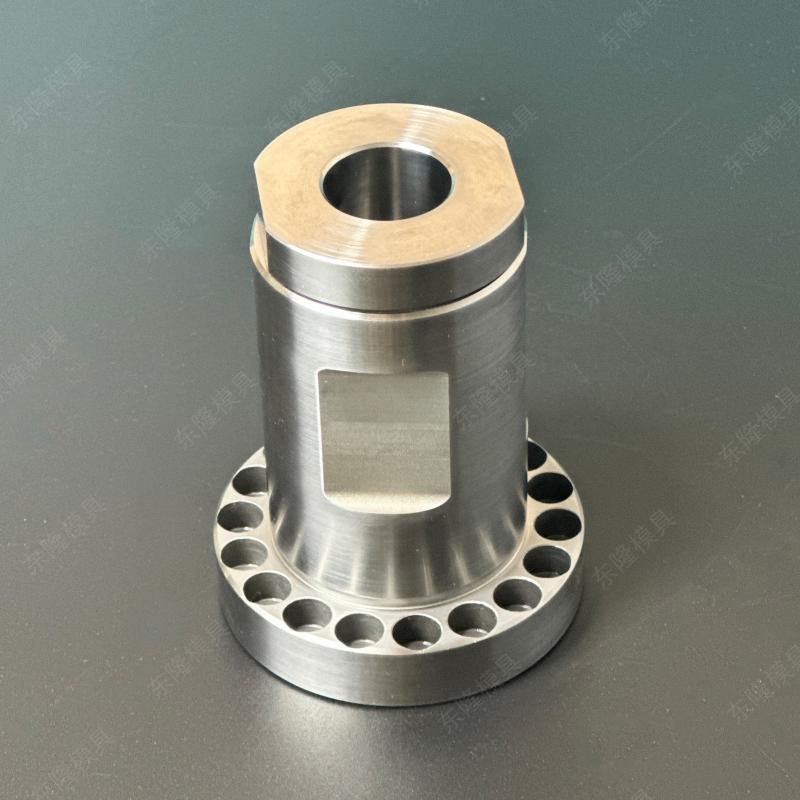1. What Are Steel Dies?
Steel Dies are precision tools used in manufacturing processes to cut, shape, or form materials into specific configurations. These tools are typically made from high-grade tool steels such as D2 (1.2379), A2 (1.2363), or H13 (1.2344) alloys, which offer exceptional hardness (typically 58-62 HRC) and wear resistance. The dies undergo sophisticated heat treatment processes including quenching and tempering to achieve optimal mechanical properties, with tempering temperatures ranging between 400-600°C depending on the application requirements.
Modern Steel Dies often incorporate advanced surface treatments like TiN (Titanium Nitride) or CrN (Chromium Nitride) coatings, which can increase surface hardness to 80-90 HRC and reduce coefficient of friction by 30-50%, significantly extending tool life.

2. Key Characteristics of Steel Dies
2.1 Mechanical Properties
High-quality steel dies exhibit:
Tensile strength ranging from 1,800-2,400 MPa
Yield strength of 1,500-2,000 MPa
Impact toughness between 20-40 J/cm² (measured by Charpy test)
Thermal conductivity of 20-40 W/m·K to withstand thermal cycling
2.2 Dimensional Precision
Precision steel dies maintain tolerances as tight as:
±0.005 mm for blanking dies
±0.01 mm for forming dies
Surface finish of Ra 0.2-0.4 μm on critical surfaces
2.3 Thermal Stability
Advanced die steels maintain dimensional stability at elevated temperatures:
Retain 90% of hardness at 500°C
Thermal expansion coefficient of 10-12 μm/m·°C
Can withstand 1,000+ thermal cycles in hot forging applications
3. Major Application Scenarios
3.1 Automotive Industry
Steel dies produce 300-500+ parts per hour in stamping operations for:
Body panels with 0.7-1.2 mm thickness
Structural components requiring 800-1,200 MPa tensile strength
High-precision transmission components with IT6-IT7 tolerance grades
3.2 Electronics Manufacturing
Micro-precision dies for:
Connector pins with 0.1-0.3 mm feature sizes
EMI shielding components requiring ≤0.05 mm burr height
Lead frames with ±0.003 mm positional accuracy
3.3 Aerospace Components
Specialized dies withstand extreme conditions:
Titanium alloy forming at 800-950°C
Superalloy forging with 2,000-3,000 MPa contact pressures
Composite molding tools maintaining ±0.1°C temperature uniformity
4. Proper Maintenance Procedures
4.1 Cleaning Protocols
Recommended cleaning frequency: Every 5,000-10,000 cycles or as needed:
Ultrasonic cleaning with pH-neutral solutions at 40-60°C
Compressed air drying at ≤6 bar pressure
Special attention to clearance areas (0.5-3% of material thickness)
4.2 Lubrication Requirements
Optimal lubrication parameters:
Water-soluble lubricants with 10-15% concentration
Application rate of 2-5 ml/m² for stamping operations
High-temperature greases (NLGI Grade 2) for guide posts
4.3 Storage Conditions
Proper storage extends die life by 30-50%:
Controlled environment at 20±5°C and RH ≤45%
VCI (Vapor Corrosion Inhibitor) packaging for long-term storage
Periodic inspection (every 3 months) for surface oxidation
4.4 Sharpening and Refurbishment
Critical maintenance thresholds:
Regrind when edge radius exceeds 0.05-0.1 mm
Maximum material removal per sharpening: 0.1-0.3 mm
Recoating recommended after 3-5 sharpenings











